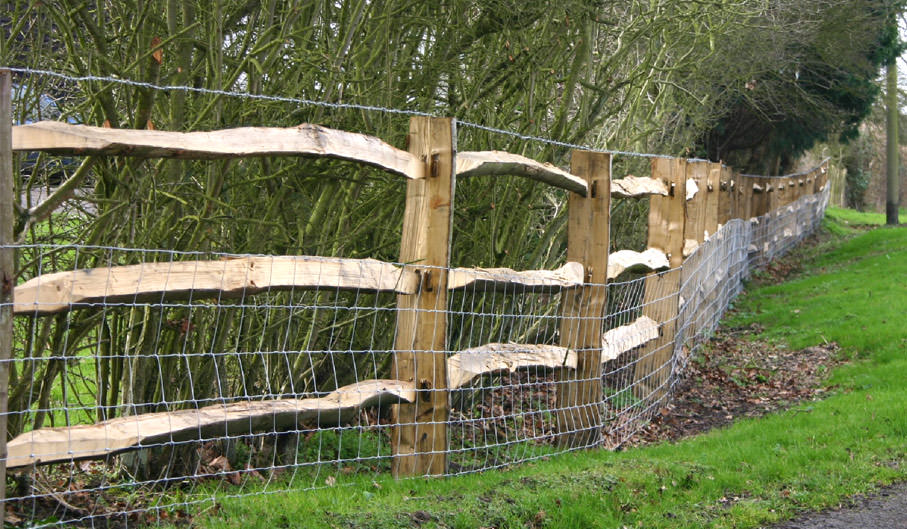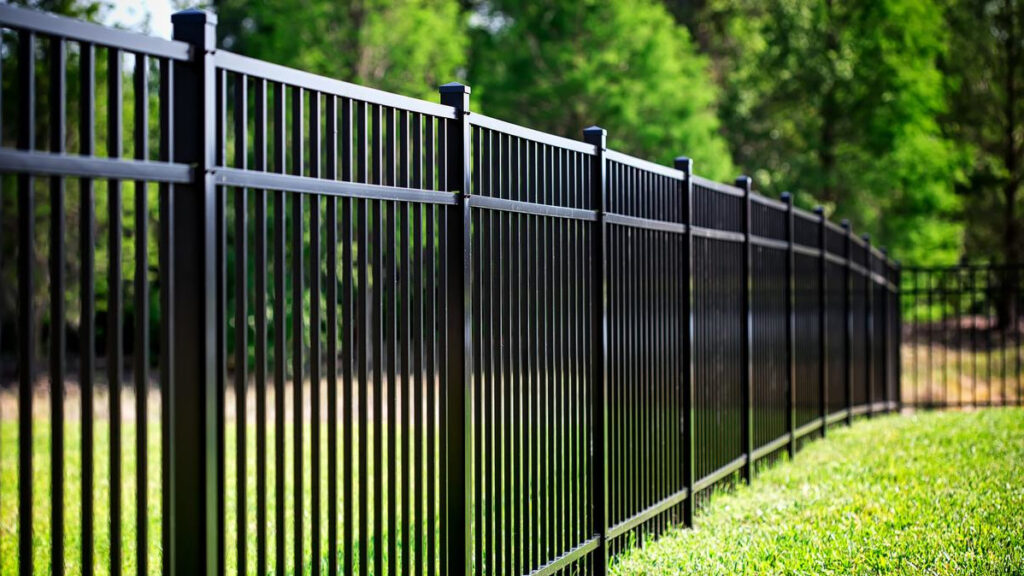Why More Homeowners Are Choosing Custom Options From Fence Builders
Why More Homeowners Are Choosing Custom Options From Fence Builders
Blog Article
A Comprehensive Overview to Fence Install: What You Required to Know Regarding Fencing Services
When it involves setting up a fencing, you have actually obtained a whole lot to consider. From picking the best materials to recognizing local guidelines, each step can really feel frustrating. You'll require to assess your property and make a decision if you wish to tackle the installation yourself or work with a professional. That's simply the beginning. Let's explore the essential elements that can make or break your secure fencing project.
Recognizing Various Types of Secure Fencing Materials
When you're picking a fencing, understanding the different kinds of fence products is crucial. Each material provides unique benefits and disadvantages, affecting your choice. Wood offers a traditional appearance and can be personalized, however it needs routine maintenance and might rot with time. Plastic is low-maintenance and long lasting, withstanding fading and parasites, however it can be more expensive upfront. Chain-link fence is affordable and useful for confining huge areas, though it lacks privacy and aesthetic allure. Metal fencing, like functioned iron or light weight aluminum, uses strength and beauty yet might need corrosion defense. Composite materials blend the most effective of wood and plastic, providing resilience with an all-natural look. Consider your budget, desired aesthetics, and upkeep preferences when evaluating these choices. Inevitably, selecting the ideal product will assist you develop a fence that satisfies your requirements and enhances your residential property's worth.
Analyzing Your Property and Fence Demands
Prior to you start your fence setup, it's important to evaluate your home borders and the objective of your fence. Comprehending regional laws and authorizations will additionally help you prevent any kind of lawful issues down the line. By thinking about these variables, you'll guarantee your fencing meets both your requirements and community requirements.
Residential Or Commercial Property Borders and Lines
Comprehending your residential property boundaries is essential for a successful fence setup, as it not only aids you determine where your fencing will certainly go however also guarantees you're respecting your next-door neighbors' room. Start by evaluating your residential or commercial property act or survey, which typically lays out the exact boundaries. You may likewise want to seek advice from a professional land surveyor if you're unclear.
As soon as you've established your boundaries, mark them clearly with stakes or flags. This visual aid will certainly lead you throughout the installment and prevent any disagreements with neighbors. Bear in mind, local zoning laws might determine fence positioning and elevation, so inspect those laws as well. Taking these steps guarantees your fencing is effectively placed and certified, making the entire process smoother for you.
Function of Secure Fencing
Third, fencing can specify your residential or commercial property boundaries, making it clear where your space ends and your neighbor's starts. A well-placed fence can help handle noise from close-by roadways or next-door neighbors and also maintain animals and children secure. By evaluating your specific requirements, you can select the best kind of fencing to attain these advantages effectively.

Local Regulations and Permits
Just how can you assure your fence setup abides with local laws? Some areas require permits for any type of brand-new fencing, while others may just need them for taller structures.
In addition, consider residential property lines and any easements on your land. Noting your limits can protect against disagreements with neighbors or possible lawful problems. By recognizing these laws upfront, you can avoid pricey errors and identify your fence is built to last, boosting both your property's value and your satisfaction.
Local Regulations and Permits for Fencing
Prior to you begin your secure fencing project, it is essential to examine neighborhood policies and acquire any required authorizations. Each city or area has its own rules relating to fence height, products, and positioning. These policies ensure that your fence adheres to safety criteria and area aesthetic appeals.
Start by seeing your regional zoning office or their internet site to locate particular demands. Fence Contractors. You may require to send a fencing plan, outlining dimensions and products. Some areas might also require a survey to verify building borders. Do not forget to consider any property owners' association (HOA) guidelines, as they can enforce added restrictions.
Neglecting to adhere to these regulations can lead to fines or forced elimination of your fencing, squandering both money and time. Take the time to study and protect the correct authorizations for a smooth setup process. This step is essential in seeing to it your task straightens with neighborhood laws and neighborhood requirements.
Picking In Between DIY Setup and Professional Services
Are you considering whether to deal with the fence installation yourself or hire an expert? This choice depends upon a number of factors. First, examine your ability degree. If you come in handy and have experience with similar tasks, DIY might conserve you money. However, be truthful regarding your capabilities; errors can bring about extra prices and headaches.
Next, take into consideration the moment dedication. Mounting a fencing takes some time, and if you're managing a hectic routine, hiring a specialist can guarantee it gets done successfully. Furthermore, assume concerning the intricacy of the project. If your backyard has difficult terrain or specific design requirements, specialists bring proficiency that can make a distinction.
Last but not least, aspect in regional laws. A professional knows the authorizations and codes needed, helping you prevent possible fines. Eventually, consider your abilities, time, intricacy, and laws to make the finest option for your fence job.
Step-by-Step Guide to Fence Installation
Once you've made a decision to progress with your fence installation, following an organized step-by-step method will assure a smooth procedure. Start by noting the fencing line with risks and string to envision the format. Next, check local guidelines to verify compliance with height and residential property lines.
Dig article holes a minimum of 2 feet deep, spaced according to your fence kind-- typically 6 to 8 feet apart. Place the articles right into the holes and load them with concrete for security. Once the articles are set, affix the straight rails or panels, making certain they're level.
Check for any kind of loosened links and make required modifications. Your fencing must currently be ready to improve your property and give the personal privacy or protection you need!
Upkeep Tips for Longevity of Your Fencing
To maintain your fence looking great and enduring much longer, regular upkeep is vital. You should set up a cleansing routine, examine for any kind of damage, and use protective coverings as needed. By remaining positive with these jobs, you'll ensure your fence continues to be tough and appealing for several years ahead.
Normal Cleaning Set Up
Begin by rinsing your fencing with water at the very least as soon as every period to eliminate dirt and particles. Don't forget to inspect for any rust on steel fences; a cable brush can aid eliminate it, followed by a coat of rust-resistant paint. Maintaining your fence tidy not only improves its look but additionally prolongs its life, saving you cash in the long run.
Check for Damage
Regularly evaluating your fence for damages is crucial if you want to preserve its stability and long life. Start by walking around your fencing to look for noticeable indications of wear, such as splits, loosened boards, or corrosion. Examine for any type of signs of see it here bugs, like termites or woodpeckers, that could endanger your fence's framework.
Apply Protective Coatings
After inspecting your fence for damages, using protective finishings is a crucial action in guaranteeing its durability - Fencing in South Auckland. If your fence is plastic or metal, think about a UV-protective spray or paint to protect against fading and rust.
See to it to clean the surface area completely prior to application, as dirt and crud can weaken the finishing's efficiency. Apply the coating in dry climate for better adhesion, and do not fail to remember to follow the producer's directions for the ideal outcomes. Routinely reapply every couple of years to keep your fencing looking great and standing solid against the elements.
Price Factors To Consider and Budgeting for Your Fence Task
When intending your fencing project, comprehending cost factors to consider is important to remaining within spending plan. Beginning by figuring out the kind of material you want, as costs can vary substantially in between timber, plastic, and steel. Do not neglect to element in labor prices-- working with experts may conserve you time yet can boost your overall expenses.
Following, measure your residential or commercial property to calculate the direct video footage required, as this straight impacts material costs. Furthermore, think about any authorizations you might need, which can include to your budget.

Finally, it's an excellent idea to establish aside a backup fund for unexpected expenditures. By planning carefully and taking into consideration these factors, you can produce a realistic budget plan that satisfies your fence needs without breaking the bank.
Often Asked Questions
Exactly how Lengthy Does the Typical Fence Installation Take?
The average fencing setup normally takes one to three days, depending upon the fencing type and size of your yard. You'll need to think about any hold-ups because of weather or permit demands too.
What Should I Do if My Fence Is Damaged?
If your fence is damaged, initially analyze the degree of the damage. Repair minor concerns yourself, however for major issues, consider speaking to an expert. Do not wait also long; it'll assist protect against further problems.
Can I Mount a Fence on an Incline?
Yes, you can mount a fence on a slope. You'll require to readjust your installment method, either by tipping the panels down or using a racked design to guarantee security and proper positioning with the surface.
What Are the Best Practices for Fencing Paint?
To paint your fencing efficiently, start with correct cleaning and sanding. Use look at here high-quality paint and use in even strokes. Do not fail to remember to choose the best climate for painting, guaranteeing it's dry and moderate.
How Commonly Should I Evaluate My Fencing?
You need to inspect your fence at the very least this hyperlink twice a year, concentrating on indications of damages, rot, or rust. Routine checks help you capture concerns early, ensuring your fencing stays sturdy and aesthetically enticing longer.
Report this page